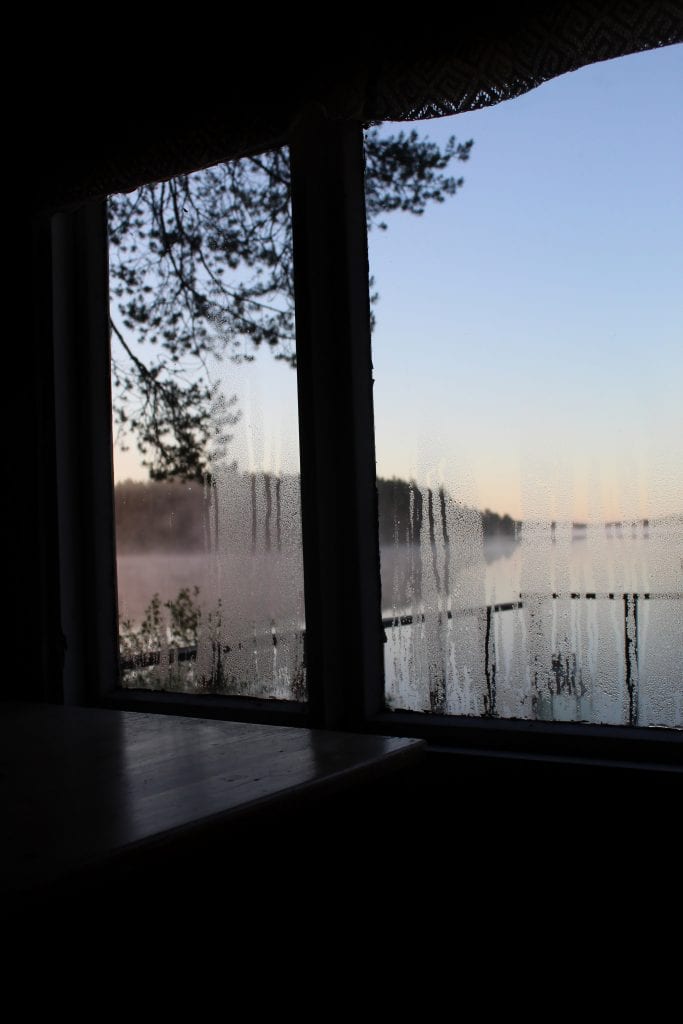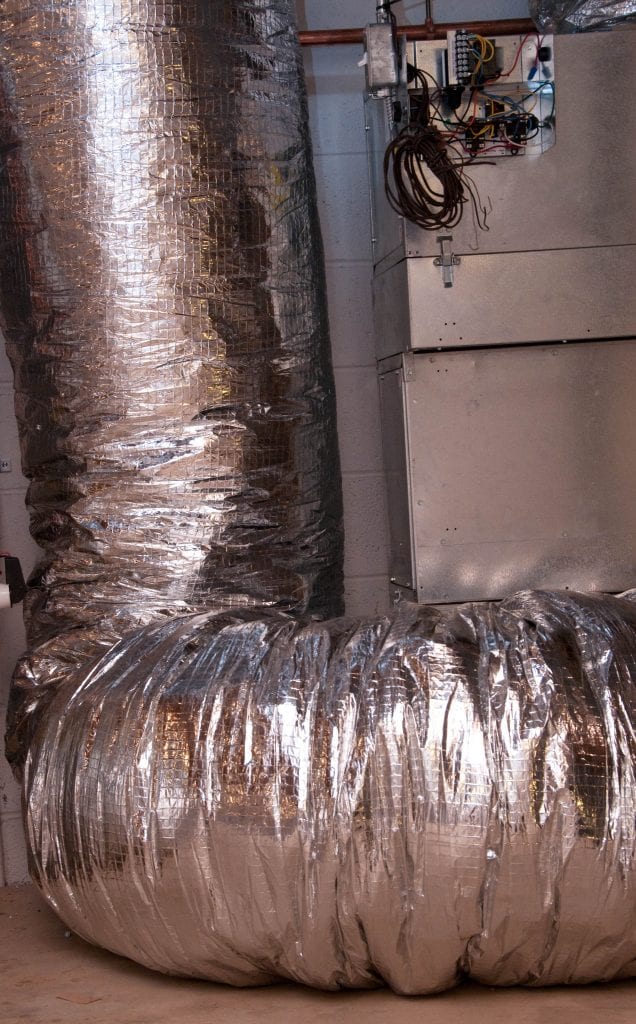January 11th, 2023

Cosmo here! It would be pretty surprising to see a dog sweat, since we stay cool by panting and other creative methods that don’t involve perspiration. But two things I never thought I’d see sweating were ducts and windows. Apparently, though, these things can sweat – and when they do, it’s something you shouldn’t ignore!
When a window or a duct is described as “sweaty,” it refers to condensation, not perspiration. If you remember learning about the water cycle in school, you may recall that condensation happens when steam or water vapor (water in gas form) cools down and becomes a liquid. When water droplets accumulate on an object such as a window or duct, this moisture resembles the beads of sweat that appear on a person’s body when they perspire; hence the term “sweating.” But when, and why, does this happen?
Well, condensation is to blame for both sweating ducts and sweating windows, but these things occur under different conditions. People are most likely to sweat in hot weather, and so are ducts! Conversely, windows are more likely to sweat during cold weather. To understand why, it’s helpful first to understand that the reason condensation occurs is that cold air doesn’t hold as much moisture as warm air. Also, keep in mind that condensation requires warm, humid air and a cool surface.

Excessive levels of condensation can cause windows to “sweat” during the winter
Sweating Windows
What Makes Windows Sweat?
When the air outside gets colder, and warm air inside your house comes into contact with a cool surface such as a glass windowpane, the air becomes cooler, meaning it can’t hold as much moisture. As a result, the air deposits water vapor onto the glass, and the window starts “sweating.” You’re most likely to observe sweating windows on winter days when the temperature is near or below freezing, but it can also happen during the summer if the air is hot and humid and the AC cools the glass.Ironically, with the trend in home construction over the last few decades of improving energy efficiency by making each house’s structure more airtight, the problem of sweating windows has become more common. A side effect of airtightness is trapped moisture, meaning higher indoor humidity and more sweating. While sweating windows are far from desirable (the water droplets block views, and can drip onto the sill or floor and damage the casing), they’re really just a symptom of a bigger issue: excess indoor moisture.
Signs of Excess Indoor Moisture
Water is one of the most abundant and essential things on earth. But too much water in your home’s air can lead to a wide range of negative effects. Humidity will affect anything made of wood, so your floors may buckle, and some wooden parts of your house’s framing, such as in your roof, may even start to rot away. Excess moisture can also be responsible for anything from peeling paint to deteriorating insulation. Sheetrock, window sills, and paneling won’t be immune to damage, either. Also, mold and mildew will thrive in moist environments.How Moisture Goes Through Walls
Vapor pressure is the force behind moisture’s ability to penetrate solid surfaces. Moisture in humid air naturally flows toward drier air to achieve balance. Since indoor air contains more moisture than outdoor air during the winter, vapor pressure will push moisture from the inside to the outside, through wood, concrete, plaster, or even brick – even these solid surfaces are porous enough for water to penetrate. In some cases though, moisture won’t be able to go through varnish and paint, meaning that condensation will be trapped in the area between the inside walls and the outside walls. With nowhere else to go, this condensation can cause paint to blister while also rotting the house’s wooden frame.Sweating Ducts
What Makes Ducts Sweat?
When ductwork is located outside the conditioned space, there may be a significant disparity between the temperature of the air inside the ductwork compared to the air outside the ductwork. As an AC system runs, cold air circulates through the supply ducts in order to cool your home’s air, but also cools the ducts in the process. When the outside surface of a duct is cooler than the dew point of the air surrounding it, the duct may start to sweat. In some cases, when the house is kept at a low temperature and return ducts run through cool vented crawlspaces, the return ducts can sweat too.Why Is Sweating Ductwork a Problem?
If too much water is on your ducts, it can lead to water damage. Depending on where the ducts are located, this can be disastrous. For example, if you have ducts in your attic, the condensation will be in close proximity to your attic insulation. Insulation loses effectiveness when wet. Long-term exposure to moisture can cause permanent damage, meaning you’ll need to get new insulation.Furthermore, if there’s enough condensation on your ducts to create puddles, the water may leak from your ceiling, causing damage to drywall and weakening your house’s structure. Don’t forget that a damp, humid area is also prone to attract mold, a serious hazard to your home’s Indoor Air Quality.
Stop Ducts from Sweating – But How?
One factor that can lead to sweaty ductwork is restricted airflow. In a well-maintained cooling system, cool air flows freely through the supply duct toward vents. But if the airflow is restricted, air will linger within the ducts longer before reaching the vents. This means the system will operate less efficiently, and also means the ducts may become colder than they were intended to. To improve duct airflow, change your AC filters, and have routine maintenance for your AC system. It’s also beneficial to keep an eye out for ductwork damage and have leaks repaired. More escaping air means more condensation! Ductwork in unconditioned space must be wrapped with insulation that is as air-tight and vapor-tight as possible. Often, the covering on ductwork deteriorates over time, and formerly dry ducts can begin to have moisture on them.
When humidity and condensation are under control, ductwork will stay dry like it’s supposed to.
Controlling Indoor Humidity is The Best Way to Reduce Condensation
No matter what time of year it is, and whether you have sweating windows in the winter or sweating ductwork during the summer, humidity is something to keep in mind. You may not feel it during the winter the way you can during the summer, but that doesn’t mean it isn’t there. For homeowners in Princeton, NJ and surrounding areas, a smart thermostat installation is one convenient way to monitor your home’s humidity. To lower your humidity level, you can use a dehumidifier if you have one, while turning down or powering off your humidifier if you have one. Exhaust fans are an effective method for removing moisture from the air, especially if you turn them on during cooking or bathing and leave them on for a while afterwards. Along with these measures to lower humidity levels, there are also several effective ways to keep the humidity level down, so that you don’t have to lower it:- -Something as simple as putting a lid on your pots when you cook can make a big difference. When you do this, you’ll see condensation on the underside of the lid – better to have it there than on your windows!
- -While we don’t recommend bathing less often, you can reduce the amount of time you spend bathing, as well as the temperature of the water you bathe in. This will have the added benefit of lowering your utility costs, as you’ll be using less water and also using less energy to heat that water.
These and other simple measures can go a long way toward lowering your indoor humidity level – and preventing your windows and ducts from sweating!
Of course, humidity is just one factor in your overall comfort in your home. For all types of HVAC installations in Mercer County, NJ, reach out to SG Heating & Air Conditioning LLC at 609-448-1273 or via this contact form!
It’s good to know that if you are having an air conditioning problem, help is just a phone call away – No sweat! Woof!

All Content © 2023 SG Heating & Air Conditioning LLC – All Rights Reserved


